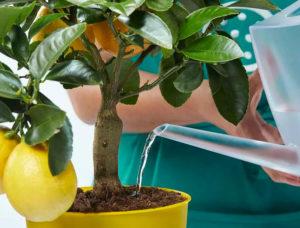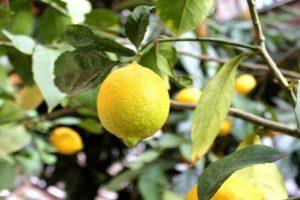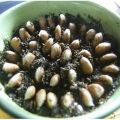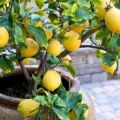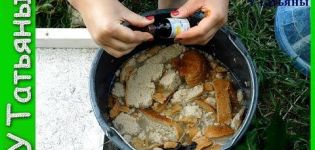Why lemon does not bloom and bear fruit and what to do
Citrus fruits are grown at home both for useful fruits and for decorative purposes. In addition, during the flowering period, they fill the entire room with their aroma, making staying in it like a fairy tale. However, it happens that the planted lemon does not bloom for a long time. What to do and how to get fruit from the plant?
Why does the lemon not bloom and bear fruit?
There may be several reasons why the lemon tree does not form flowers and does not bear fruit. It is necessary to understand well whether mistakes in care have been made, and also whether pests have appeared on the tree.
Wrong vaccination
If the seedling was grown from a stone, then you should not expect a harvest and flowering from it. A fruiting lemon must be grafted. For these purposes, mainly the Meyer and Dioscursia varieties are used, which are capable of producing crops the next year. The stock can be a seed-grown orange or a grapefruit.
Incorrectly selected temperature mode
Lemon does not tolerate temperature fluctuations. With its sharp drops, the plant can bloom profusely, but then lose color. It is recommended to grow a tree at a temperature of +20 - +24 ° С. Heat negatively affects its growth and development, and especially in a closed room.
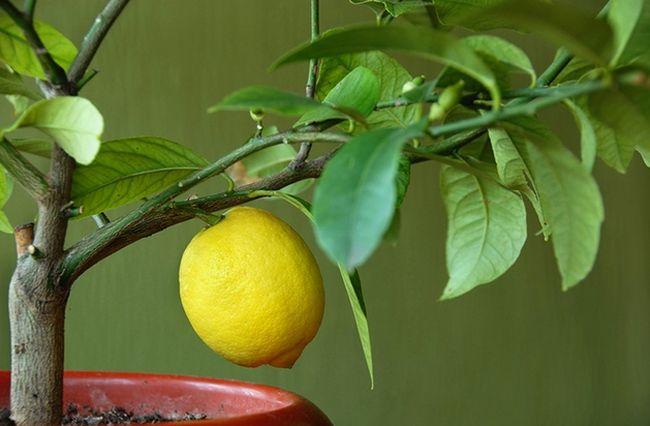
Insufficient moisture
The lemon tree loves a humid indoor climate. Otherwise, flower buds will not form at all or will crumble. To humidify the air, use special devices or simply install an open bowl of water in the room. Also, the plant is regularly sprayed.
Abundant flowering
There are times when a lemon blooms but does not bear fruit. Experts recommend normalizing the number of flowers by removing the excess ones. If there are many of them, then the tree will lose a lot of strength and there will be no more of them left for the formation of ovaries. You can determine how many flowers to leave by counting the number of leaves on the plant. For every 10 leaves, 1 flower is left.

Lack of vitamins and minerals
During flowering, lemon requires good nutrition, high in vitamins and minerals. They come with top dressing.
If you do not fertilize the soil, the tree sheds color and does not form ovaries.
Diseases and pests
Lemon, like other indoor plants, can be affected by pathogens and pests. During the flowering period, fungal infections are considered the most dangerous.To prevent their appearance and development, it is necessary to control the level of moisture and normalize watering. Of the pests, the plant affects:
- thrips;
- spider mites;
- scabbards.
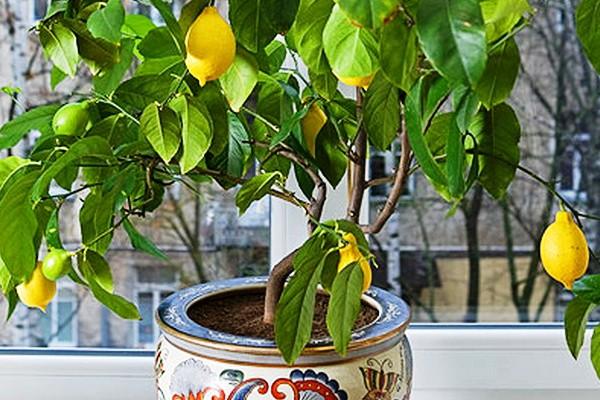
If the tree is sick, then it will not bloom, much less form an ovary. It is necessary to take urgent measures to destroy pests and pathogenic flora, to make lemon healthier. Only then will he be able to please with abundant flowering.
How to make lemon blossom and bear fruit?
What if you want to see the flowering of homemade lemon and enjoy its healthy fruits? It is necessary to stimulate flowering, provide proper care, improve the health of the tree and eliminate possible mistakes in care.
Vaccination and feeding
If the grafting is done correctly, then the indoor lemon will be able to please the owners with the harvest in 3 years. The most commonly used method of inoculation with an eye. The stalk is grafted only if the branch contains a small number of leaves. You can perform this action in the split or behind the bark. The work is carried out during the period when active sap flow begins in the lemon. This usually happens in April or May.
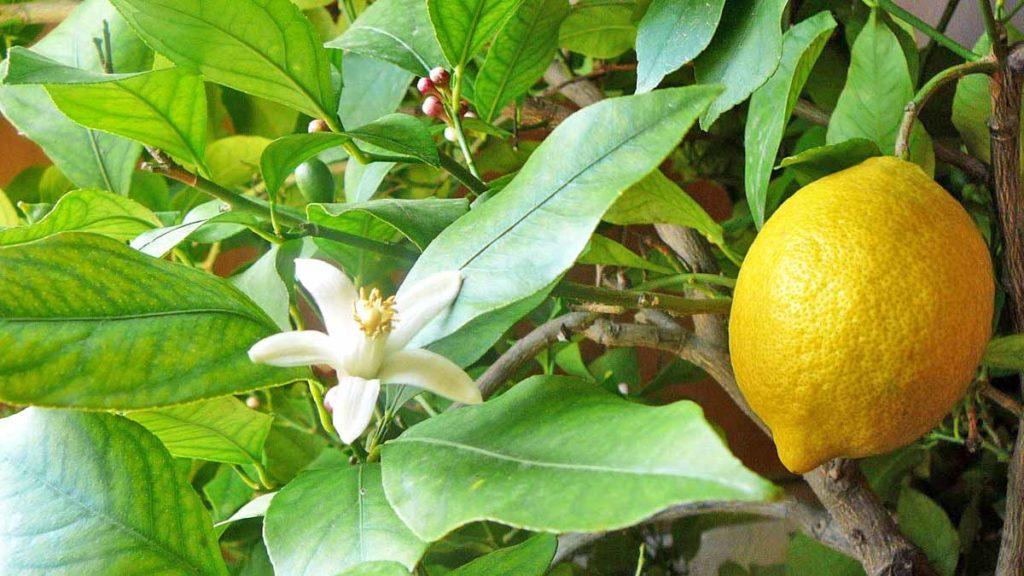
For the rootstock, mature seedlings are used, which have thick branches, the bark from which moves well from the wood. The growth should contain about 5 leaves. For the operation to be efficient, a clean and very sharp knife is used. Strong alignment is achieved by tight strapping of the grafted lemon. If, after 3 weeks, the leaf petiole near the eye turned yellow, then the vaccination has taken root successfully. Failure in this matter can overtake in the case when the bark is poorly separated from the wood.
Cultivating a lemon tree in an enclosed space requires that it be properly fed.
The amount of fertilizer must be properly dosed and applied to the soil. During the flowering period, the plant is fed 2 times a month, and in winter, the application of drugs is reduced to 1 time per month. Well suited for growing citrus organic and humic fertilizers. There are natural dressings that contain a full set of essential trace elements. To achieve abundant flowering, they must be introduced from February to August.

Crown formation
For homemade lemon to bloom, it needs to be pruned regularly from the first year of cultivation. First, the tops are trimmed so that after 3 years a crown with 7 main branches is formed.
It should be remembered that the flowers are formed just at the tips of thin twigs, so you do not need to constantly shorten them. Otherwise, flowering will never come. With proper molding, the tree throws out flower stalks within 2 years after planting. The lower shoots are subject to mandatory pruning as soon as they begin to appear. Flowers are not formed on them, and such growth takes moisture from the tree.
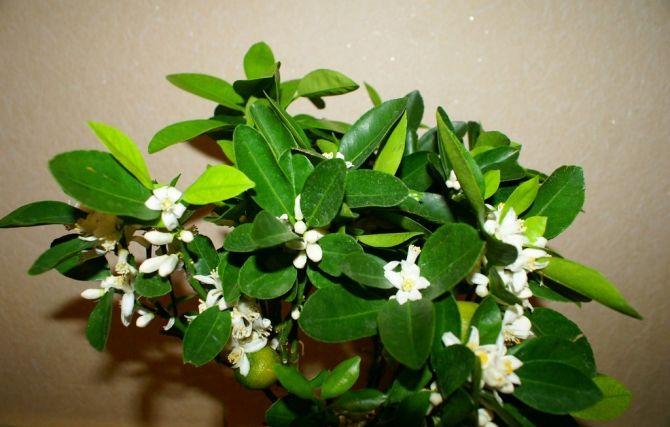
Pulling branches
With the onset of sap flow, the branches of the lemon tree become flexible. At this time, you can pull them together with a soft wire, which will allow you to concentrate the supply of nutrients there. This will contribute to the active formation of peduncles next year.
Holding the branches in a horizontal position gives the lemon crown a spreading shape, which is somewhat similar to a fountain... The garter is removed around November, when the period of sap flow stops. The procedure should be repeated after 1 or 2 years.
